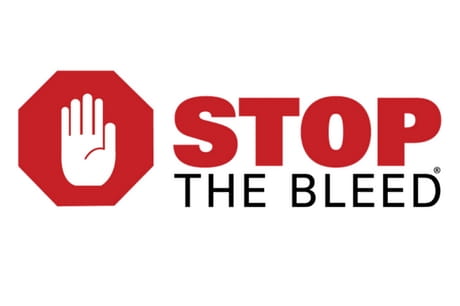Preventing burns during the holiday season
,
Learn the three types of burn injuries and treatment
From baking and festive candles to a roaring yule log in the fireplace, the holiday season often comes with an increased risk of burns in the home.
In fact, over 70 percent of the estimated 486,000 patients seeking treatment for burns each year sustain their injuries at home.
“Burns are one of the most common preventable injuries,” said Dr. Todd Holmes, an emergency medicine physician at Geisinger South Wilkes-Barre. “They are often treatable at home with your first aid kit, but with a little extra attention paid to preventive measures, most burns can be avoided.”
If do you get burned -even after swapping candles for battery-operated lamps and strapping on the restaurant-grade oven mitts- here’s what you need to know about assessing the severity of a burn, seeking medical help and providing treatment at home.
Know your burn and your options
There are three burn types: first degree, second degree and third degree.
“First-degree burns are the most common and least severe,” said Dr. Holmes. “They occur when the top layer of skin is singed, causing pain, swelling and redness.”
Second-degree burns affect deeper layers of skin and can also cause blistering. Third-degree burns are the most severe type, marked by white or charred skin and numbness of the area around the wound.
“In the case of third-degree burns, you should always head to a hospital emergency department to receive treatment,” explained Dr. Holmes. “In some cases, third degree burns may require a skin graft—a surgical treatment where healthy skin from another part of your body is transplanted to the burn area to promote healing—but this is not part of immediate emergency care. These burns would usually be referred to a burn center for definitive care.”
If the skin is peeling or the area of your burn feels numb, you should seek immediate medical attention to prevent permanent nerve damage or other side effects.
On the other hand, the location of your burn can make as much of an impact as the severity when assessing your treatment options.
Burns to the face, joints or genitals should always be immediately treated by a doctor in order to improve your odds of making a full recovery without permanent damage to vulnerable surrounding tissue.
If you have a serious, life-threatening situation, always call 9-1-1.
At-home treatment options
Most minor burns can be treated at home with items you keep in your first aid kit.
“If the site of the burn turns white and then red again when you push on it with a clean finger, you have a minor or first-degree burn that can be treated at home,” said Dr. Holmes. “With these injuries, the most prevalent symptom is pain.”
To treat the pain, start by cooling the burn with cool running water or a wet compress. Avoid using cold water or ice, as that can cause additional damage. You may also want to take an over-the-counter pain reliever like ibuprofen or acetaminophen.
If minor blistering occurs, be sure to let them run their course. The fluid inside blisters protects open skin from infection. If a blister breaks, immediately cover it with sterile gauze or a bandage.
“Once the burn cools, you should use antibiotic ointment and natural moisturizers, like aloe vera, to keep the skin healthy and free of germs,” said Dr. Holmes.
After keeping the burn clean and covered for one to two weeks, it should be on the road to recovery. However, if you notice signs of an infection like oozing or discoloration, you should call your doctor or visit a local urgent care facility right away.
Prevention is best
The best way to enjoy the holidays is safely. Keeping your home safe includes ensuring children stay out of the kitchen when you’re cooking those big holiday meals, making sure the oven door is closed and always turning pot handles inward.
If you’re using a deep fryer or cooking with hot oils, juices or grease, always wear oven mitts and stand several feet away from the stove. Also, be sure to keep a fire extinguisher nearby.
Geisinger has nine ER/emergency department locations, so there’s always one close to you. All our emergency departments are open 24 hours, 7 days a week. For a list of emergency department and Urgent Care locations and directions, click here.
In fact, over 70 percent of the estimated 486,000 patients seeking treatment for burns each year sustain their injuries at home.
“Burns are one of the most common preventable injuries,” said Dr. Todd Holmes, an emergency medicine physician at Geisinger South Wilkes-Barre. “They are often treatable at home with your first aid kit, but with a little extra attention paid to preventive measures, most burns can be avoided.”
If do you get burned -even after swapping candles for battery-operated lamps and strapping on the restaurant-grade oven mitts- here’s what you need to know about assessing the severity of a burn, seeking medical help and providing treatment at home.
Know your burn and your options
There are three burn types: first degree, second degree and third degree.
“First-degree burns are the most common and least severe,” said Dr. Holmes. “They occur when the top layer of skin is singed, causing pain, swelling and redness.”
Second-degree burns affect deeper layers of skin and can also cause blistering. Third-degree burns are the most severe type, marked by white or charred skin and numbness of the area around the wound.
“In the case of third-degree burns, you should always head to a hospital emergency department to receive treatment,” explained Dr. Holmes. “In some cases, third degree burns may require a skin graft—a surgical treatment where healthy skin from another part of your body is transplanted to the burn area to promote healing—but this is not part of immediate emergency care. These burns would usually be referred to a burn center for definitive care.”
If the skin is peeling or the area of your burn feels numb, you should seek immediate medical attention to prevent permanent nerve damage or other side effects.
On the other hand, the location of your burn can make as much of an impact as the severity when assessing your treatment options.
Burns to the face, joints or genitals should always be immediately treated by a doctor in order to improve your odds of making a full recovery without permanent damage to vulnerable surrounding tissue.
If you have a serious, life-threatening situation, always call 9-1-1.
At-home treatment options
Most minor burns can be treated at home with items you keep in your first aid kit.
“If the site of the burn turns white and then red again when you push on it with a clean finger, you have a minor or first-degree burn that can be treated at home,” said Dr. Holmes. “With these injuries, the most prevalent symptom is pain.”
To treat the pain, start by cooling the burn with cool running water or a wet compress. Avoid using cold water or ice, as that can cause additional damage. You may also want to take an over-the-counter pain reliever like ibuprofen or acetaminophen.
If minor blistering occurs, be sure to let them run their course. The fluid inside blisters protects open skin from infection. If a blister breaks, immediately cover it with sterile gauze or a bandage.
“Once the burn cools, you should use antibiotic ointment and natural moisturizers, like aloe vera, to keep the skin healthy and free of germs,” said Dr. Holmes.
After keeping the burn clean and covered for one to two weeks, it should be on the road to recovery. However, if you notice signs of an infection like oozing or discoloration, you should call your doctor or visit a local urgent care facility right away.
Prevention is best
The best way to enjoy the holidays is safely. Keeping your home safe includes ensuring children stay out of the kitchen when you’re cooking those big holiday meals, making sure the oven door is closed and always turning pot handles inward.
If you’re using a deep fryer or cooking with hot oils, juices or grease, always wear oven mitts and stand several feet away from the stove. Also, be sure to keep a fire extinguisher nearby.
Geisinger has nine ER/emergency department locations, so there’s always one close to you. All our emergency departments are open 24 hours, 7 days a week. For a list of emergency department and Urgent Care locations and directions, click here.

Content from General Links with modal content




